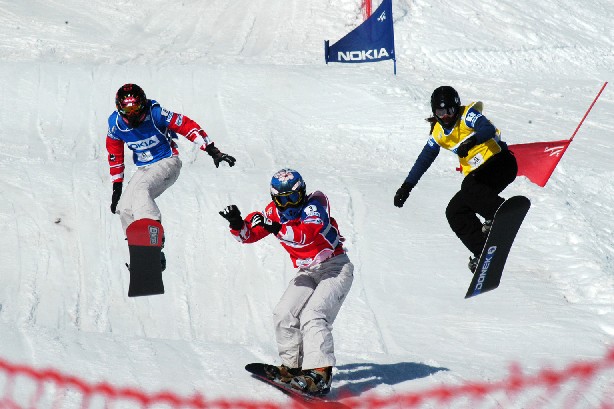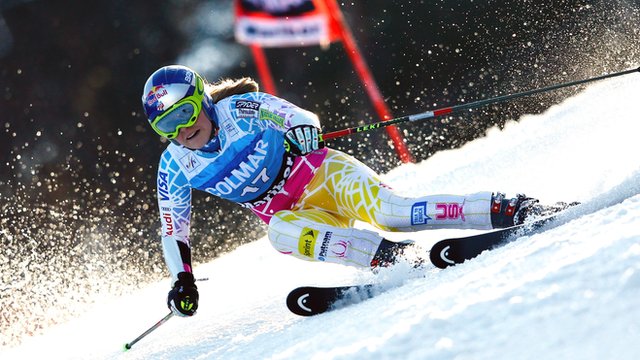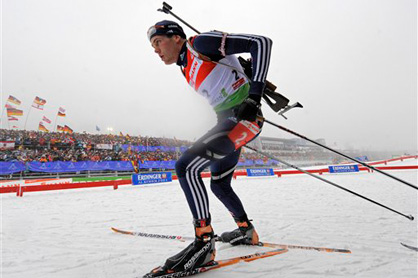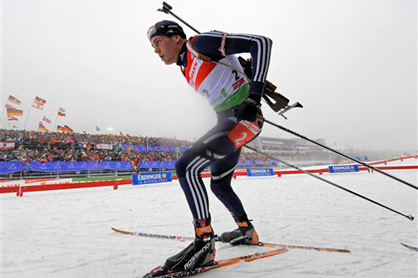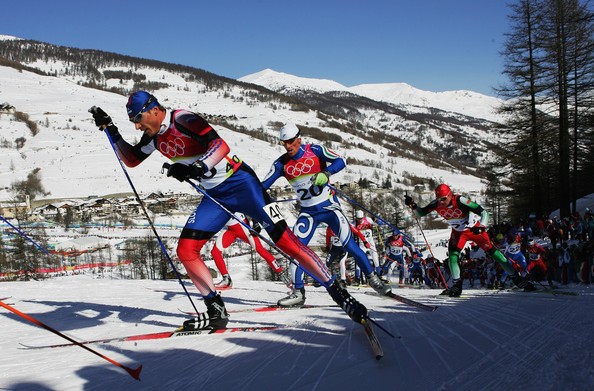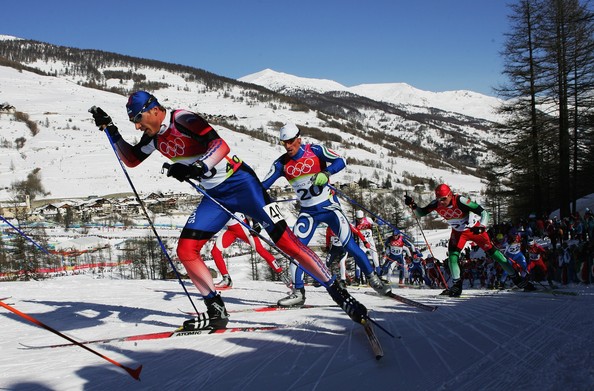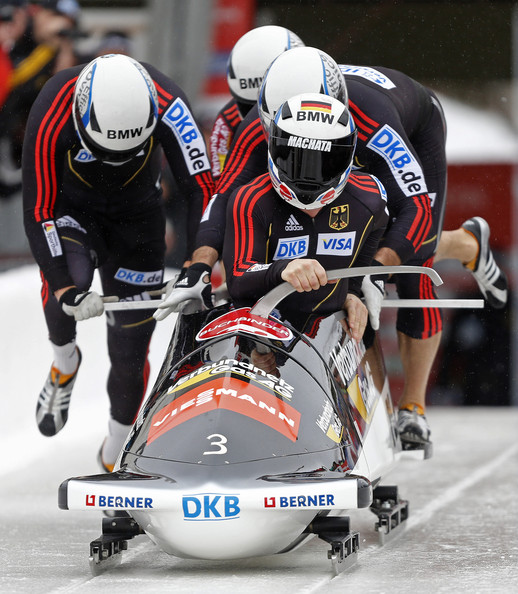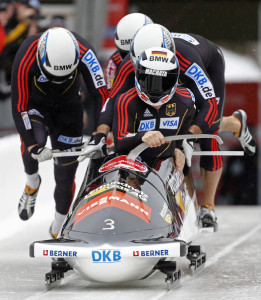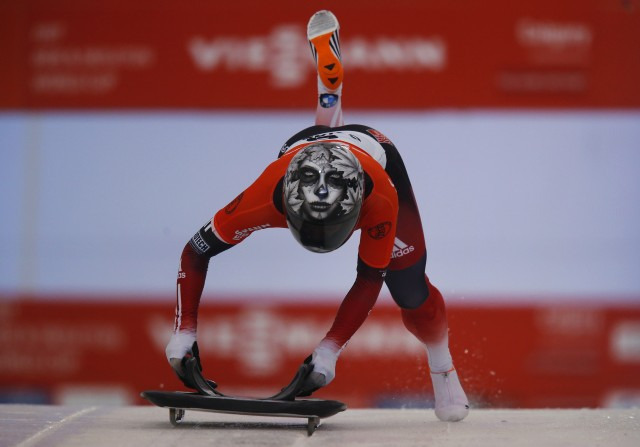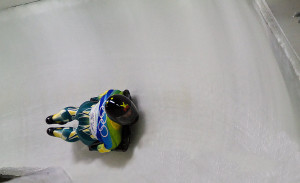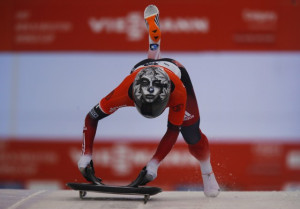Today I have the distinct pleasure of hosting my Mom’s debut on the blogosphere. Since my Mom was a figure skater for many years as well as being the early influence on me when it comes to sports and Olympics in particular (I believe our family first bought a TV in 1988 just so we could watch the Olympics,) I asked her to write a post on Figure Skating! She came through with flying colors. Straight 10s from the son judge! Thanks Mom!
All About Figure Skating at the Olympics
Figure skating’s first Olympic contest was held during the 1908 summer Olympics! Then in 1920, figure skating was held in conjunction with the Games of the Olympiad. Since 1924, figure skating has been included in the winter Olympics.
There is a quota for contestants in the Olympics figure skating competition: 30 skaters each in men’s and women’s (called ladies’) individual events, 24 couples in ice dance, and 20 in pairs. There are strict rules regarding entry into the Olympics. Using a point system, the number of places per country is usually determined by the results of the previous year’s World Figure Skating Championships. Which skaters from each country gets to go to the Olympics is the responsibility of each national governing body. Some countries rely on the results of their national competition, while others use criteria such as international competitions. If the host country has not qualified, it automatically gets one entry in each event. Skaters have to have turned 15 years old by July of the previous year to the Olympics and must be a citizen of the country that they are representing.
How Does Figure Skating Work?
In top competitions, skaters perform to music two programs, short and long, which may include jumps, spins, lifts, throw jumps, death spirals, step sequences, and other elements or moves, depending on the discipline and its rules.
The ice skate has a blade with a groove in it, creating two edges, an outside and an inside. In figure skating, the skater skates on one edge of the blade, not on both at the same time (known as a flat edge). Singles and pairs skates have a set of toe picks, or pointy teeth, at the front end of the blade. Ice dancers’ skates have blades that are about an inch shorter in the back and have smaller toe picks in the front.
In singles competitions, men and women perform a combination of jumps, spins, step sequences, spirals and other elements in their programs.
In pairs skating, a team consists of a man and a woman. Each team performs elements such as throw jumps (the man “throws” the woman into a jump), lifts (the man holds the woman above his head in a variety of holds and positions), pair spins (both man and woman spin around a common axis), death spirals (the man pivots on his toe while he holds onto the woman, who circles him on a deep edge almost parallel to the ice), side-by-side jumps, spins in unison, and step sequences.
In ice dancing, the pair again consists of a man and a woman. The focus is on intricate footwork danced to the rhythm of music, usually while the man and woman are in a close hold. The man is not allowed to lift the woman above his shoulders.
In skating competitions, elements are based on their base value (level of difficulty) and the grade of execution (how well the skater executes the element), which combines into a technical score.
Why do People Like Watching Figure Skating?
Figure skating engages people because it combines athleticism with artistry, gymnastics with dance, music with storytelling, fun with drama, technique with creativity. People are amazed at the talent of the skaters and the difficulty of the discipline. They enjoy listening to the music and seeing the beautiful skating movements. People appreciate the dedication of the skaters to their sport. People wish they were the ones skating so magnificently on the ice.
How Dangerous is Figure Skating?
Figure skaters don’t wear helmets and, as a result, there is a risk of head injury resulting from falls from lifts. Some skaters in pairs or ice dancing get slashed by their partners’ skates when they skate too close to each other. Some suffer hip injuries from practicing throws and lifts for so many years. Other figure skaters have foot, knee, and back injuries. Some skaters have been injured when colliding with other skaters while practicing on the ice.
Editor’s note: Notice how my Mom doesn’t even mention the merest hint of kneecapping as an endemic danger.
What’s the State of Gender Equality in Figure Skating?
Prize money in figure skating is relatively low compared to other sports. Prizes for men and women in championship competitions are the same as each other. Pairs that win prize money split it evenly.
What are Some Olympic Figure Skating Stories?
In this year’s Olympics in Sochi, team figure skating has been introduced. Each participating team has skaters who represent the four figure skating disciplines: men’s singles, ladies’ singles, pair skating, and ice dancing. This competition in the Sochi Olympics was completed on February 9, 2014. The Russian team won the gold medal, with Canada taking silver, and the United States taking the bronze.
Russia’s 15-year old Julia Lipnitskaia made a splash with the world at Sochi when she jumped and spun into first place in the ladies’ singles short program of the team skating competition. After that, she again skated brilliantly in the ladies’ long program of the team event. Keep your eye on her in the upcoming ladies’ individual skating event as she poses a challenge to 2010 gold-medal winner Kim Yu-na of South Korea.
This was fun! Thanks for reading,
Cookie Levine

